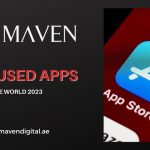Vercel created Next.js as an open-source React framework to develop full-stack web apps. It improves react-based applications with additional features like static website generation and server-side rendering.
Next.js strengthens the React framework with site compilation and additional data-fetching utilities that offer optimised builds with logical methods of maintaining information.
The main benefit of Next.js is its capability of letting users develop apps that could execute back-end actions, and pre-fetch routes and allow TypeScript.
System Requisites
- Compatibility with macOS, Linux and Windows (including WSL)
- Node.js 12.22.0 or later
Let's Create Next App
As we have discussed the Next.js framework in detail, it's time to start creating its app. Let's discuss the installation and setup process.
Installation and Setup
The most hassle-free way to develop a Next.js application is to open the terminal, choose the directory to create the app in and cd into it. Then run the below command:
npx create-next-app@latest
or
yarn create next-app
or
pnpm create next-app
This will get your installation done. Then follow these steps:
- Run npm run dev or pnpm dev or yarn dev to initiate the development server on http://localhost:3000
- Check your application on this link — http://localhost:3000
- Modify pages/index.js and view the edited outcome in your browser.
Next offers a complete engaging experience where that directs users through all the steps to create a new project without any arguments. It leaves a positive impression and increases the chances of a new user’s retention.
Why Use Create-Next-App?
Creating the Next app enables you to develop a new Next.js application within seconds. It is managed by the makers of Next.js and has a few perks:
- Engaging Experience
Running npx create-next-app@latest starts a positive experience that directs users through setting up a project.
- Zero Dependencies
You can launch a project in the blink of an eye. Create Next App doesn’t have any dependencies.
- Offline Support
It will automatically find if a user is offline and bootstrap their project utilizing their local package cache.
- Support for Examples
Create Next App could bootstrap your app by taking an example from the Next.js examples library such as npx create-next-app --example api-routes.
- Tested
Create Next App is included in the Next.js monorepo and tested with Next.js’s integration test suite. It means it runs as anticipated with every launch.
Read: Mobile App Testing Checklist 2024
Ways to Fetch Data in Next.js
Next.js furnishes several methods to fetch information from an API or other sources. This web application framework is recognized as a Server-Side Rendering Framework.
It enables you to render content in various methods, based on your app’s use case. These are pre-rendering with Static Generation or Server-side Rendering, and creating or editing data at runtime with Incremental Static Regeneration.
SSR: Server-side Rendering
Next.js features a function called getServerSideProps which you can use to fetch content and render the data of a web page at request time. Visit this link to learn more.
SSG: Static-site Generation
getStaticProps is a next.js function for Static Site Generation. The framework pre-renders a page if a user exports this function from a certain page at build time utilizing the props returned by it. Read more about it here.
CSR: Client-side Rendering
You can perform client-side rendering and fetch data in Next.js using a React hook library called SWR.
Dynamic Routing
getStaticPaths is a function for SSG which is used statically pre-render all the paths highlighted by it if you export the function from a page that utilizes dynamic routes.
ISR: Incremental Static Regeneration
ISR allows users to execute static generation on every page separately without requiring to redevelop the entire site. Read more about Incremental Static Regeneration here.
Conclusion
If you want to start using the Next.js framework for creating applications, the best way is to use create-next-app to initiate your project. This CLI tool allows you to rapidly begin creating a new Next.js app with all things set up for you.
You can also get help from professional mobile app developers with experience in using React and Next.js frameworks. Maven Digital is a renowned name in the world of mobile app development in Dubai. Contact us to discuss your mobile app project!








